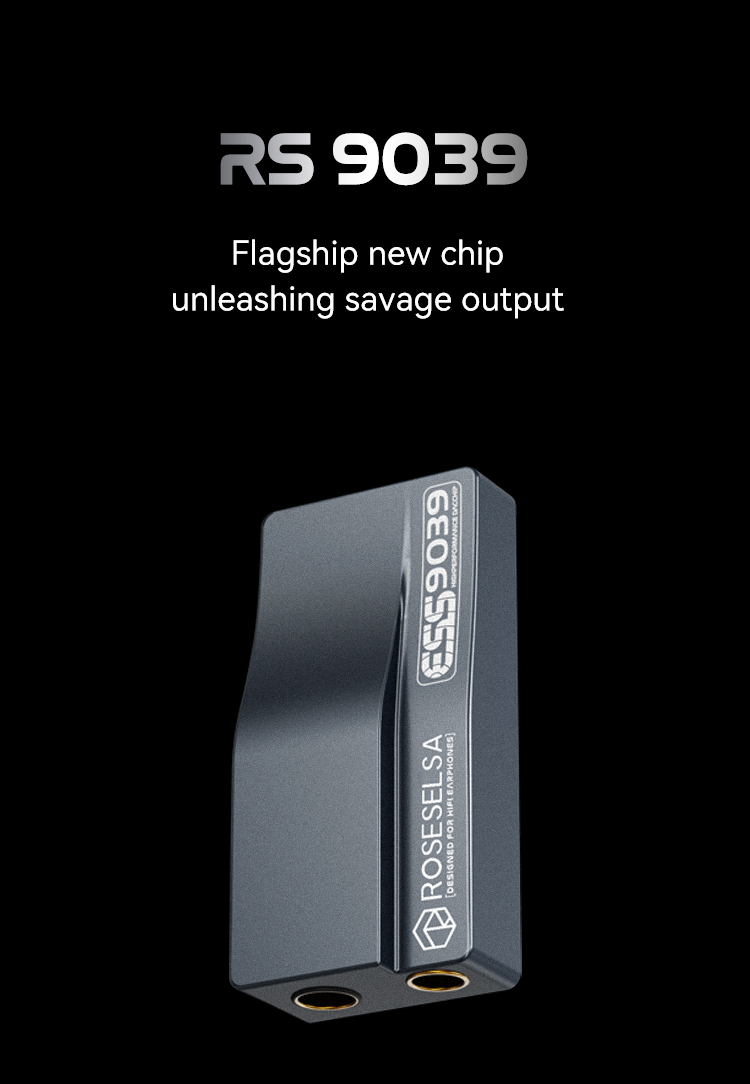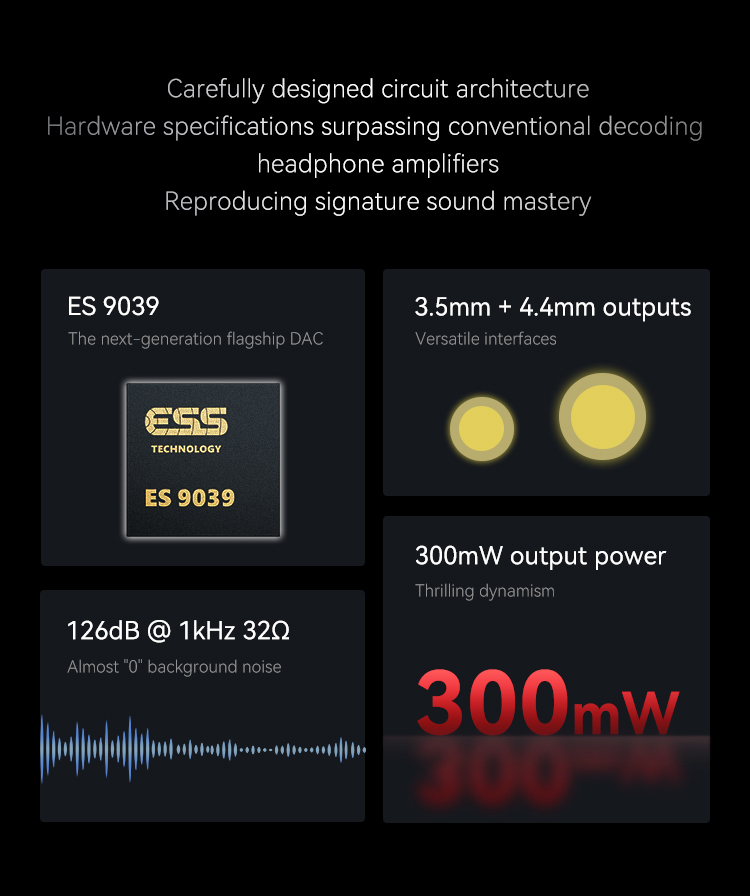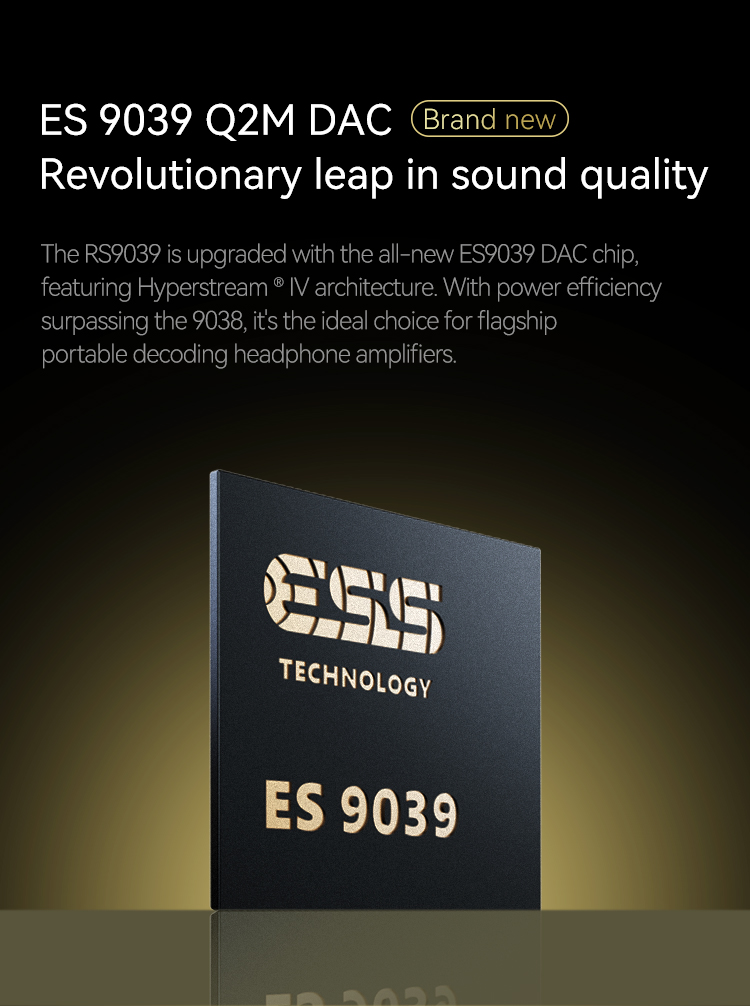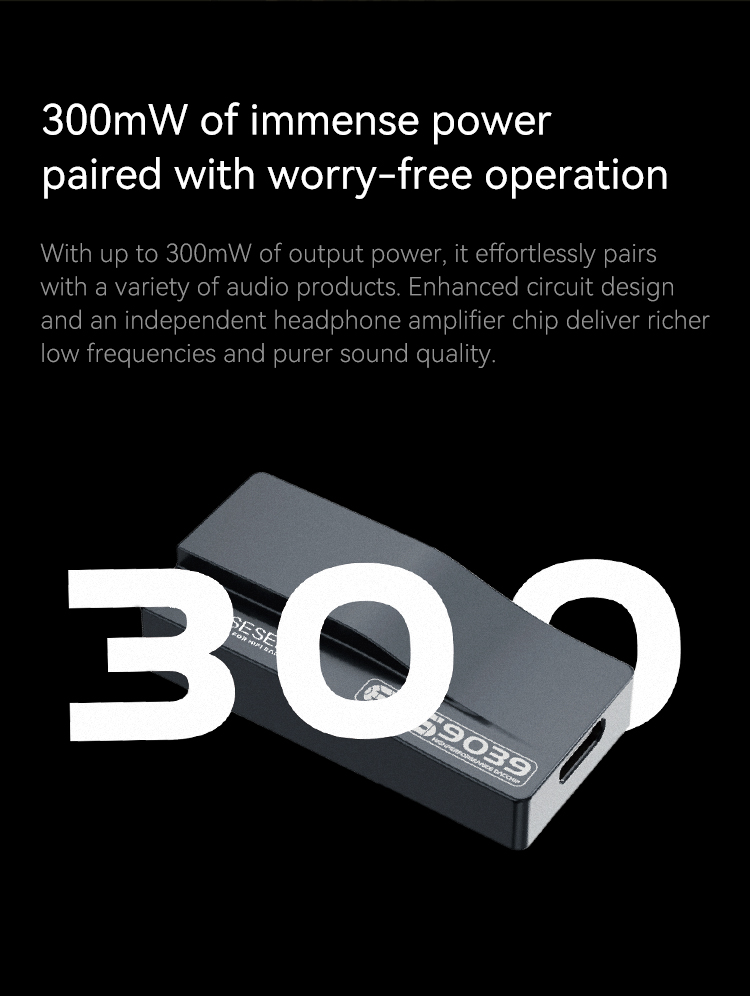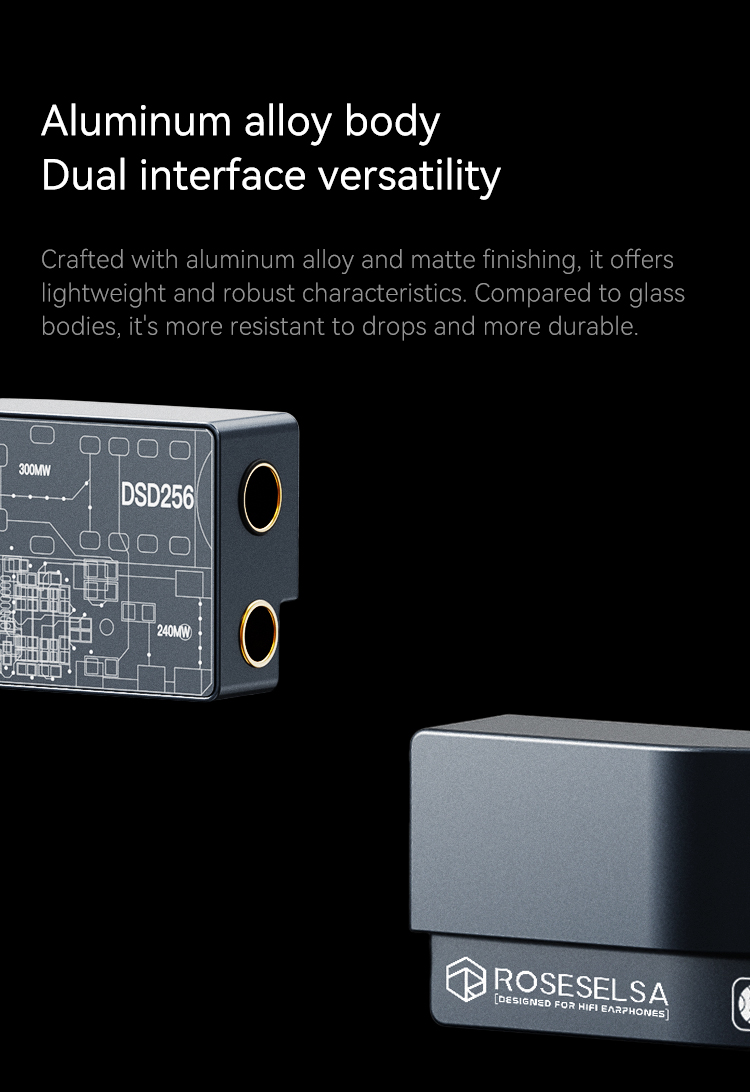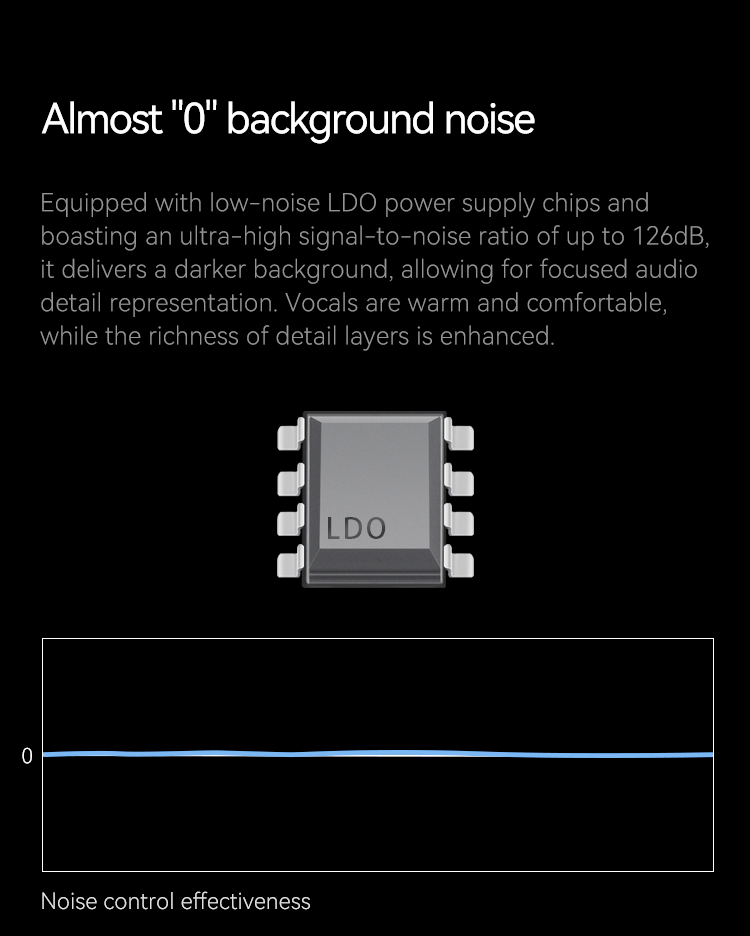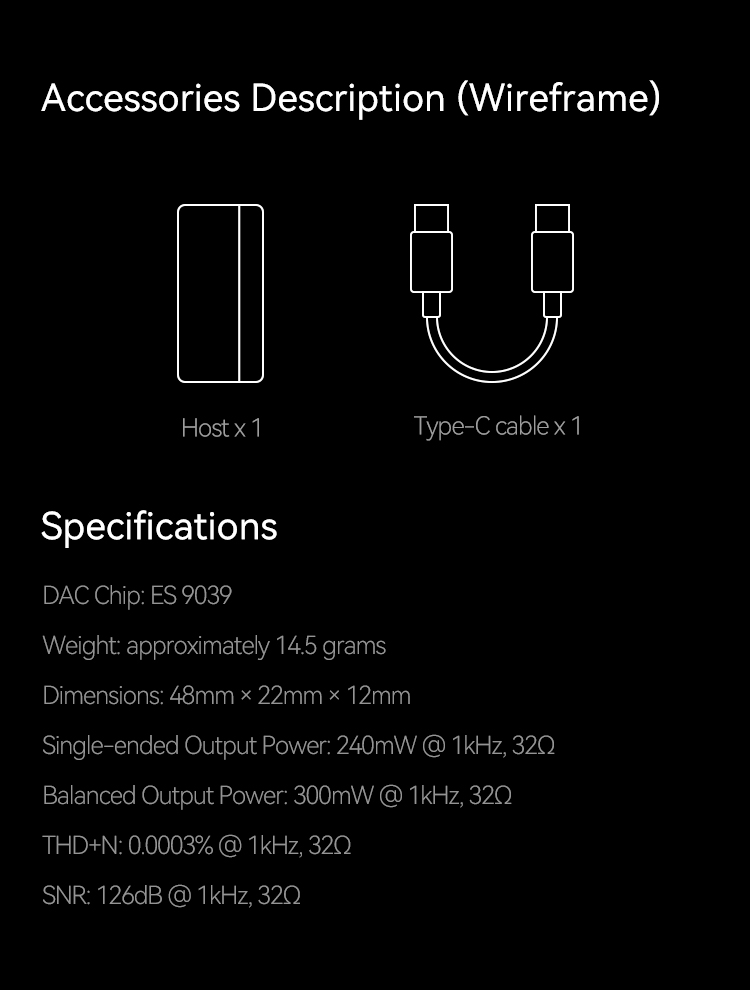DISCLAIMER
I would like to thank Hifigo for providing this unit.
The ROSESELSA RS9039 can be gotten here:
https://hifigo.com/products/roseselsa-rs9039 or
https://www.amazon.com/dp/B0D3PWW3C3/roseselsa+rs9039/ (no affiliate links).
SPECIFICATIONS/COMPATIBILITY
Tested at: $75.99 USD
The RS9039 is a plug-and-play dongle. No additional driver installation is needed for Windows 10 and above, and this dongle was easily recognized by various Windows and Android devices I paired it with. As I am not an Apple ecosystem user, I can't vouch for its compatibility with this subset of products.
ACCESSORIES
Other than the dongle, the packaging comes with:
- Carrying case
- USB-C to USB-C cable
While there is a lack of a USB-A adapter and Lightning cable, at least Roseselsa has provided a huge carrying case. This is large enough to store the dongle plus accessories, and the externals are hard, with soft cushioned internals.
The USB-C to USB-C cable is on the shorter side, though it is well braided with reinforcement at the cable insertion areas.
DESIGN/FUNCTION
The RS9039 is fashioned from CNC-machined aluminum alloy. It is literally built like a tank, with a matte silvery finish. All the edges are smoothened, with no poking parts, so do not worry about being stabbed during usage!
Measuring 48 x 22 x 12 mm, and weighing a mere 14.5 g, this dongle is very light and compact, and can easily fit in a pants pocket.
The RS9039 is a no frills dongle, with no app compatibility and no PEQ options. Neither does it have any filters or screen, and - this may be a deal-breaker for some - it glaringly does not have any volume controller or gain options. Hence, users are stuck to adjusting the volume at the upstream source (eg DAP, phone, computer etc).
On one end, we have the USB-C port for power and data, and the opposite end contains the 3.5 mm (single-ended) and 4.4 mm (balanced) ports, with both reinforced by gold-plating.
INTERNALS
This DAC/AMP is powered by an ES9039Q2M saber chip. It allows playback of PCM up to 32bit/384kHz, and DSD up to DSD256.
The back of the dongle incorporates the design schema, for the technical junkies that are interested in the inner workings.
 SOUND/PERFORMANCE
I tested the RS9039 with only Android phones and Windows laptops and PCs. Once again, I'm not an Apple user, so I can't confirm its performance with Apple products.
SOUND/PERFORMANCE
I tested the RS9039 with only Android phones and Windows laptops and PCs. Once again, I'm not an Apple user, so I can't confirm its performance with Apple products.
On phones, I used the HiBy Music Player, with USB bit perfect OTG activated on a Samsung S22.
Tonally, the RS9039 sports a neutral signature. Timbre sounds natural with a clear midrange. End-to-end extension is good.
When discussing
technicalities, the RS9039 has an expansive stage, with excellent imaging and layering. Micro-detailing is captured well, with solid instrument separation. Essentially, nothing sounds claustrophobic or compressed, and the keyword to describe the soundscape would be "grand".
Power-wise, this dongle is marketed to output 240 mW (@32 Ω) for the single-ended port, and 300 mW (@32 Ω) for the balanced one. While the RS9039 would be considered to have big juice on tap, it isn't the most powerful dongle in this sub-$100 USD bracket - that goes to the Fiio KA13 - but it should power most gear out there, other than outlier beasts. Sadly, there are no gain settings available.
As usual, I put all dongles through a series of acid tests in driving ability:
1) Final Audio E5000 (low sensitivity at 93 dB/mW)
2) Sennheiser HD650 (high impedance at 300 ohm)
3) Yinman 600 ohm (600 ohm impedance and 87 db/mW sensitivity)
On 4.4 mm, the E5000 was surprisingly driven well, with good bass texturing and speed, though soundstage was a tinge smaller than more powerful sources. The HD650 was amped solidly, soundstage and dynamics were not too far away from desktop type sources.
The final boss - the Yinman 600 ohm - which has a ridiculously low sensitivity coupled with high impedance, is not driven properly by the majority of portable devices. Headroom was reached adequately here, with surprisingly serviceable dynamics and soundstage, though bass was somewhat flabby. This is a commendable effort, as some pricier sources cannot drive the Yinmans to the same extent in terms of quality (not reaching the volume, but driving well).
This dongle
gets warm but not hot even when paired with hard-to-drive behemoths. There is
no hiss heard with sensitive IEMs. However, there was a minor
"pop" heard on disconnecting IEMs. Some dongles have a worse "pop" suppression system, and this was just a small inconvenience noted here on the RS9039.
We have no information on the
output impedance specs of this DAC/AMP, but I surmise that it should be relatively low, as fastidious low impedance IEMs that were paired with it sounded similar tonal-wise.
COMPARISONS
Comparisons will be made against other sub-$100 USD dongles.
Penon Tail
The Penon Tail uses dual CS43131 chips; it is also a barebones dongle in not having EQ, app, DAC filters, or a screen. However, the Tail does have a volume control, but this is not independent with wide steps between each level. Additionally, the Tail has no "pop" suppression installed, and the Tail fares much worse, with a way larger "pop" noted on removing IEMs.
The Tail is likewise neutralish but with a thinner note weight and a more artificial timbre. The Tail's power specs are roughly half - 151.25 mW (at 32 ohms) on 4.4 mm - compared to the 300 mW on offer with the RS9039. As such, the Tail cannot drive too demanding gear.
The Tail falls behind in technical pefrormance, espousing weaker soundstage and imaging.
Fiio KA13
The KA13 is a neutral bright dongle with dual CS43131 DAC engines. It is brighter, with potentially more sibilance in the higher-end. The KA13 is also more metallic, and doesn't sound as full in tone.
The KA13 on 4.4 mm desktop mode can hit 550 mW output (THD+N balanced<0.0005% (32 Ω)), trumping the 300 mW available on the RS9039. Hence, the KA13 can potentially juice more demanding outliers, though we can't game physics as the KA13 gets hotter during use, with more battery drainage.
In technicalities, the KA13 is inferior in soundstage and imaging.
However, the KA13 has more UI goodies to play with - it has a Fiio control app for settings configuration, in addition to having a well-implemented independent volume control with finely tuned steps.
CONCLUSIONS
The Roseselsa RS9039 is a unique of flower within the dongle greenhouse ecosystem. It is a source designed splendidly when it comes to music appreciation - there is huge power available to drive most gear - coupled with excellent technicalities, housed within a neutral signature. Soundstage and imaging are a highlight, and it sounds "grand". On A/B comparisons against other dongle rivals, these other contenders sound compressed in contrast.
However, some consumers might find the RS9039's UI to be sorely lacking, with no app, PEQ, filters, nor screen. It does not even have a volume controller or gain options, which is a admittedly a potential deal-breaker! It seems that Roseselsa has concentrated most of their efforts into the tuning and music playback, but the rest of the bells-and-whistles of a modern day dongle are somewhat undercooked, so to speak.
Thankfully, the RS9039 is built like a tank, with a compact and portable frame, and it comes with a big carrying case. The RS9039 does not heat up drastically during usage too. Though there is a bit of a "pop" noted on disconnecting transducers, there are other dongles that do much worse in this arena.
All things considered, this DAC/AMP is one for the true audiophile connoisseur: someone that focuses purely on the music and wants superb sonic reproduction, without caring about external aspects like volume controls or filters or PEQ. In all likelihood, if you are reading this, you probably fall in the former camp of wanting the best-sounding dongle at sub-$100 USD, and this might hit the spot. For lay-consumers that want something more friendly in terms of value-added functions, there are other dongles to consider, though with perhaps compromises in technicalities or tonality.

